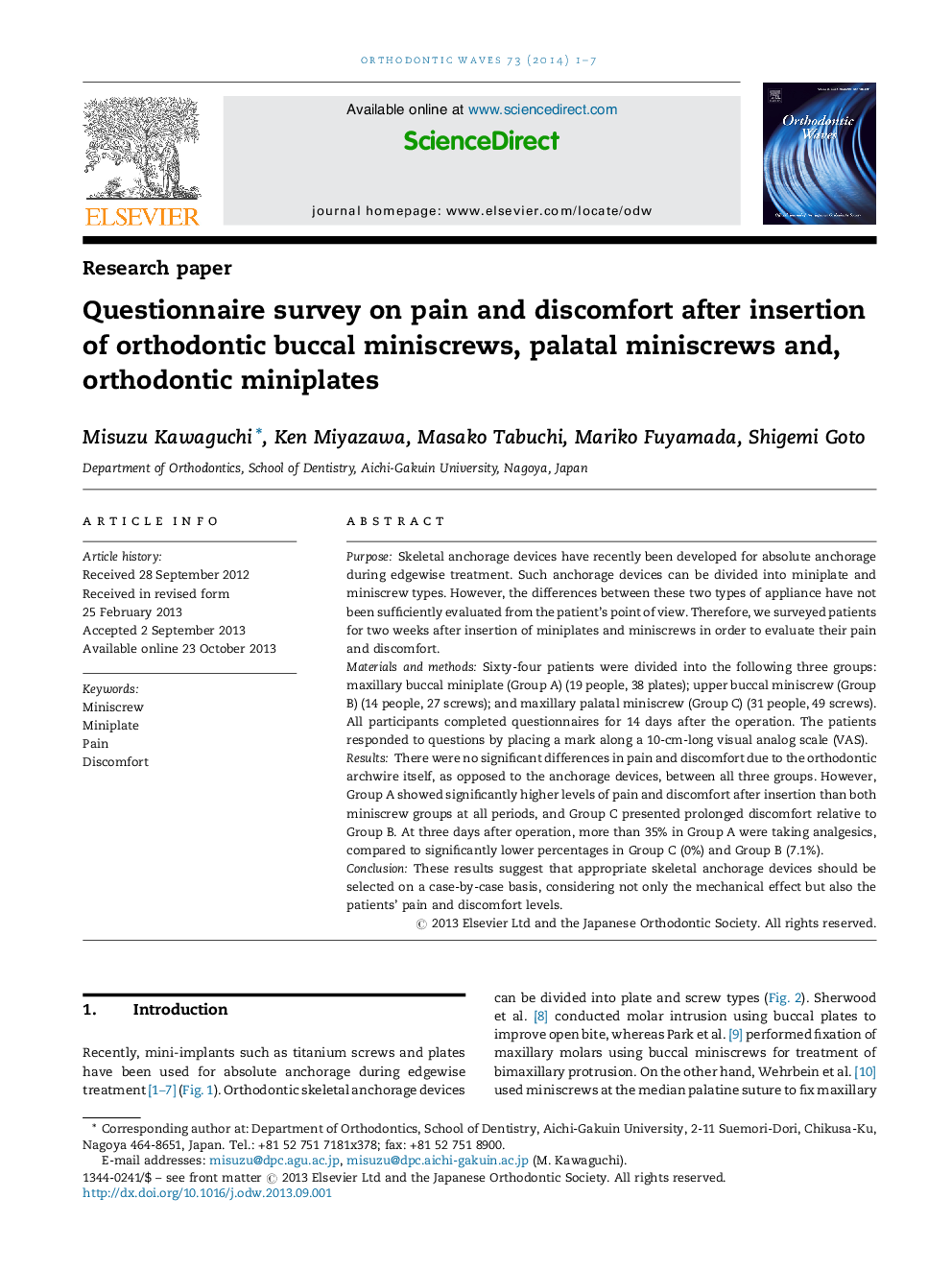| Article ID | Journal | Published Year | Pages | File Type |
|---|---|---|---|---|
| 3170368 | Orthodontic Waves | 2014 | 7 Pages |
PurposeSkeletal anchorage devices have recently been developed for absolute anchorage during edgewise treatment. Such anchorage devices can be divided into miniplate and miniscrew types. However, the differences between these two types of appliance have not been sufficiently evaluated from the patient's point of view. Therefore, we surveyed patients for two weeks after insertion of miniplates and miniscrews in order to evaluate their pain and discomfort.Materials and methodsSixty-four patients were divided into the following three groups: maxillary buccal miniplate (Group A) (19 people, 38 plates); upper buccal miniscrew (Group B) (14 people, 27 screws); and maxillary palatal miniscrew (Group C) (31 people, 49 screws). All participants completed questionnaires for 14 days after the operation. The patients responded to questions by placing a mark along a 10-cm-long visual analog scale (VAS).ResultsThere were no significant differences in pain and discomfort due to the orthodontic archwire itself, as opposed to the anchorage devices, between all three groups. However, Group A showed significantly higher levels of pain and discomfort after insertion than both miniscrew groups at all periods, and Group C presented prolonged discomfort relative to Group B. At three days after operation, more than 35% in Group A were taking analgesics, compared to significantly lower percentages in Group C (0%) and Group B (7.1%).ConclusionThese results suggest that appropriate skeletal anchorage devices should be selected on a case-by-case basis, considering not only the mechanical effect but also the patients’ pain and discomfort levels.
